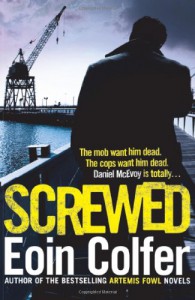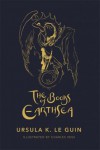Arbie's Unoriginally Titled Book Blog
It's a blog! Mainly of book reviews.
Currently reading
Reading progress update: I've read 514 out of 683 pages.

Aeneas is saved from imminent death at the hands of Achilles by Poseidon - because he has to go on to lead the Trojans and found a new kingdom, elsewhere.
Reading progress update: I've read 82 out of 282 pages.

"Flippin' Ada..." said Ghost Wolf.
Not as good as, ' "Oh cobblers," said Mordaunt 90, ' but still fab!
 3
3
Reading progress update: I've read 512 out of 683 pages.
 Aeneas faces off against Achilles, but he can't just get on with it - he's got to spout off about his ancestry first...
Aeneas faces off against Achilles, but he can't just get on with it - he's got to spout off about his ancestry first...
 3
3
 3
3
 2
2
Reading progress update: I've read 503 out of 683 pages.
 At Zeus's order, Athena gives Achilles the food of the gods - by putting straight in his chest without him noticing. Then he dons the armour Hephaestus made for him, takes up the spear his father gave him and heads out to confront the Trojans, feud with Agamemnon settled. Hera prophesies his violent death but Achilles is not deterred; he's heard it before and knows he's not coming back from Troy alive.
At Zeus's order, Athena gives Achilles the food of the gods - by putting straight in his chest without him noticing. Then he dons the armour Hephaestus made for him, takes up the spear his father gave him and heads out to confront the Trojans, feud with Agamemnon settled. Hera prophesies his violent death but Achilles is not deterred; he's heard it before and knows he's not coming back from Troy alive.
 2
2
Singularity Sky, Charles Stross

This is what happens if you say to yourself, "I know! For my debut, I'll write an SF novel that's a giant allegory for the Edinburgh Festival!"
OK, there's more to it than that and it's a page turner. Those familiar with Stross's later works will see many familiar themes here - Cthulhu mythos, the Singularity, absurdities...
Reading progress update: I've read 488 out of 683 pages.
 Hephaestus forges for Achilles probably the fanciest shield ever made - and the rest of a set of armour. Thetis takes it to her son.
Hephaestus forges for Achilles probably the fanciest shield ever made - and the rest of a set of armour. Thetis takes it to her son.
 2
2
Reading progress update: I've read 478 out of 683 pages.

Hera and Athena defy Zeus once more and help Achilles to intimidate the Trojans sufficiently that the Argives are - at last! - able to get Patroclus' body back to camp. Night falls and battle ends - but will Achilles enter the fray in the morning? Hector is defiant in the face of that prospect but the others aren't so confident...
 1
1
Screwed, Eoin Colfer

At the beginning the amount of bad wise-cracks is overwhelming, but when some semblance of lot starts atters improve. I'm not sure Colfer's absurdism is really the greatest match with noirish crime fiction, though. Works better with smart-alec centaurs, teenaged criminal masterminds and fairies out to smas the Patriarchy.
Reading progress update: I've read 470 out of 683 pages.

Antilochus gives Achilles the news he dreads. Thetis comes from the sea to talk to the leader of the Myrmidons.
 1
1
 2
2












